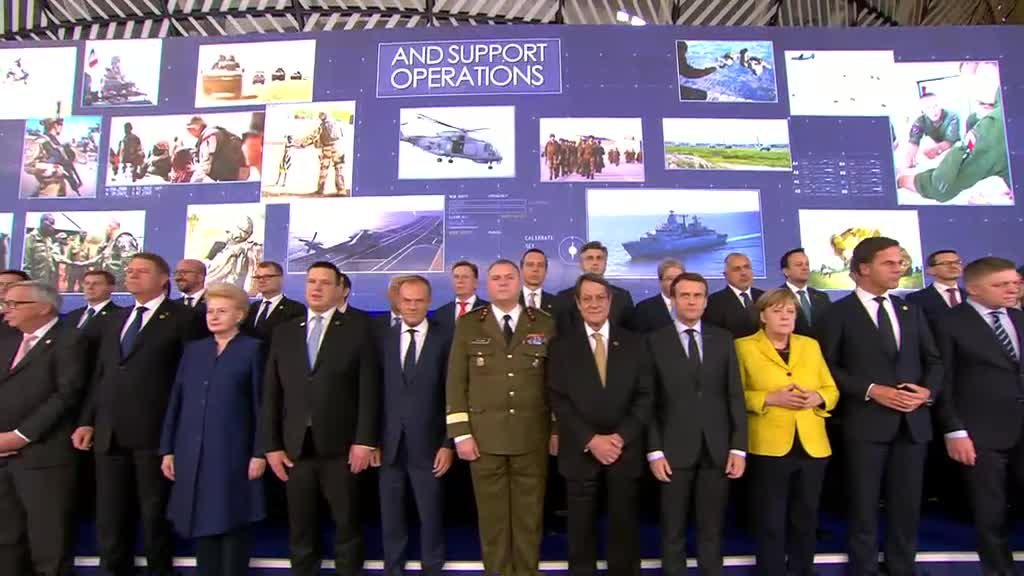
Give us the real PESCO, please!

In
With 47 projects adopted, there is a lot of activity in Permanent Structured Cooperation (PESCO), the European Union’s mechanism for defence cooperation. However, the current projects do not effectively address the priority shortfalls. The 25 participating Member States (all but Denmark and Malta) could implement all 47 projects and still be not much more capable than they are today. Moreover, PESCO actually is much more than projects: it entails twenty binding commitments, which have received far less attention.
This commentary was first published in Encompass.
(Photo credit: EU Council Newsroom, © European Union)
*****
Give us the real PESCO, please!
With 47 projects adopted, there is a lot of activity in Permanent Structured Cooperation (PESCO), the European Union’s mechanism for defence cooperation. However, the current projects do not effectively address the priority shortfalls. The 25 participating Member States (all but Denmark and Malta) could implement all 47 projects and still be not much more capable than they are today. Moreover, PESCO actually is much more than projects: it entails twenty binding commitments, which have received far less attention.
What these commitments really entail is a move from cooperation to integration in defence, in order to create “a coherent full spectrum force package”. That is how the Member States themselves put it when they launched PESCO in 2017. The only way to meet the 20 commitments is to build permanent multinational force packages.
As I argue in a new policy paper, PESCO: Don’t Waste the Chance, PESCO is an instrument with great potential – but it is not yet working as it should. The reason why PESCO is not on track is double.
First, the purpose of PESCO remains unclear. The core of the EU’s Common Security and Defence Policy (CSDP) as a whole is a Capability Development Plan (CDP) that is not binding, and a Headline Goal (to be able to deploy 60,000 troops) that the Member States have forgotten. Member States could have defined an intermediate objective specifically for PESCO, but didn’t.
Second, there is a general culture of non-compliance in the CSDP that affects PESCO as well. In the CSDP, it is quite common for Member States to agree on decisions that they have no intention to implement. As a result, Member States use PESCO to further national objectives and pet projects instead of a common EU goal.
In order to ensure that PESCO succeeds, three courses of action are recommended:
- Focus on a concrete objective: Turn the existing project to create a Crisis Response Operation Core (CROC) into the central PESCO project, to which the other projects must be tailored. This means building an integrated multinational force package with national brigades as the building-block. Member States can then launch other PESCO projects to harmonize the equipment of these brigades, and to build the strategic enablers (command & control, transport, intelligence, etc.) that are needed to deploy them without having to ask non-EU members for help.
- Prioritise the most important projects, notably strategic enablers: Distinguish between strategically relevant PESCO projects and others, and oblige Member States to participate in at least one of the former, so that they can more easily reach the critical mass of participants. The funding from the Commission’s European Defence Fund (EDF) should only go to these strategically relevant projects, instead of being spread out over dozens of smaller projects.
- Promote compliance: Clearer procedures and more peer pressure will help, but only so much. A more effective solution is to interlock the CDP and the NATO Defence Planning Process (NDPP), making both equally binding. An EU level of ambition could be inserted in the NDPP, in between the targets for individual states and the target for NATO as a whole, setting binding collective targets for the group of NATO allies and partners who make up the EU (plus any European state that might wish to associate with it, such as Norway). NATO and the EU would co-decide on these collective targets.
To make this happen, a “core within the core” is needed: a subset of the PESCO states that takes the lead and does things. France and Germany must be in that core: they took the initiative to activate PESCO; together they have the scale to initiate major projects in all relevant areas. Working closely together at the highest political level with the High Representative and the Commission, they can definitely make PESCO happen if they want to.